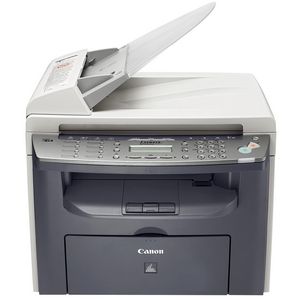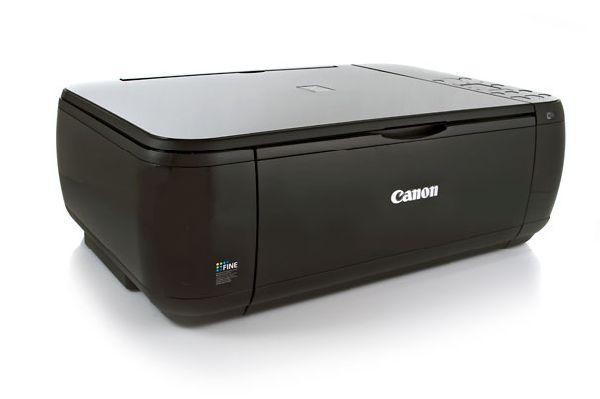Back To School Technology Buyer's Guide
by Zach Throckmorton on August 4, 2011 8:55 PM ESTPrinters
The second peripheral every college student should consider buying is a printer. You might have easy access to a printer in your dorm, or the nearest campus lab might be a hike from your apartment. And you might not finish your paper until 3am, and it might be the end of December and your northern campus is getting hammered by a snowstorm—doing that once was enough to motivate me to save up enough money for a printer!
Printers come in three basic types: laser, inkjet, and all-in-ones. All-in-ones combine a copier, scanner, and printer (either a laser or inkjet) into one device. Inkjet printers are usually the least expensive initially, but the cost of printing (the ink cartridges) is usually higher per page than laser printers. Laser printers can sometimes be quite inexpensive, and while toner cartridges cost more than ink cartridges, they last much longer. The majority of printing done by college students is black and white text, and for that reason, I recommend laser printers over inkjet printers. However, if you won’t be printing that much (say, less than 100 pages per month), an inkjet printer is a viable solution. I particularly like all-in-ones because they often aren’t that much more expensive than dedicated printers and being able to copy and scan at home means fewer trips to the computing center or library—and not getting nickle and dimed for those services, as most colleges charge a per-page fee for them.
Canon's PIXMA ip2702 is an inexpensive inkjet at $34 that can handle occasional printing with ease. Spending more money on a dedicated inkjet printer can yield additional features like wireless printing and higher quality picture printing, but durability and reliability general don't start to improve until you shell out $200+ on a prosumer or commercial grade inkjet. For mostly black and white text, cheaper inkjets are just as good as cheap inkjets.

If you'll be printing out hundreds of pages of text per month, Brother's HL-2240D and Samsung's ML-2525 are great budget options. Both can occasionally be found on sale for $50 or less. Neither of these models are built like tanks, but if you take care of them, they'll last for years (I still use a Samsung ML-2010 that I bought in 2006). Like inkjets, spending more money on a laser printer might mean faster printing, wireless printing, and/or more capacious toner cartridges, but again, these features are not necessary for most college students.

Finally, Canon's PIXMA MP495 and imageCLASS MF4350d are inkjet and laser (respectively) all-in-ones. The MP495 is compact in size and also features wireless printing, while the MF4350d is physically larger (though its footprint is not terribly large, unlike many dedicated scanners). The MP495 is currently on sale for less than $60, so unless you're very budget-conscious, the added scanning and copying capabilities are definitely worth the $20 extra compared to the PIXMA ip2702. At less than $100, the MF4250d is very competitively priced compared to other laserjet all-in-ones. Regardless of whether you use a dedicated inkjet or laser printer, or some sort of all-in-one, keep in mind that you can dramatically lower printing costs by refilling ink and toner cartridges.
If you'd rather read papers, book chapters, and assignments on a portable device than printing out sheet after sheet of paper, we cover tablets and ereaders on the next page.











94 Comments
View All Comments
The0ne - Friday, August 5, 2011 - link
I think the recommendations covers too broad the general view of a college student. Many of these aren't even needed as a good 15" or even a 17" will do just fine. If you want to game, that's a whole different area to pursue with even more accessories to consider. It's not as if you are going to lug around all those equipments with you on campus nor have all the time in the world to do everything.I also vote for the inclusion of a very good bag to lug around books and your accessories!
Fujikoma - Friday, August 5, 2011 - link
Given how most students live, I'd recommend a desktop for durability. Most really don't need the extra power and could get by with a laptop, but most aren't careful enough when it comes to long term care. There were three of us in a 12'X12' room (largest on campus) and we shared one desktop (early 90's and two of us couldn't afford one) instead of going to the eng. bldg. With the exception of the music student (Apple fanatic), everyone owned an intel/amd custom build with one atari (800XL) and one commodore (don't remember) thrown in for good measure. Maybe it was because we were all science/eng. majors. The laptop, a friend lent me, didn't help during class. It was much easier taking notes. Of course, playing games during a boring lecture was a bonus, but the laptop really had no value. A laptop really serves a student that goes home regularly and needs to work on their classwork while away. Of course, I don't think graphing calculators should be allowed in any math class prior to differential equations. Same thing with the iPads the local middle school is buying instead of books... it has no place in a school. Call me old fashioned but learning how to solve a problem the hard way with repetition is far better than just entering data and letting a gadget do all the work (our interns (and a few of our engineers) are idiots who have very little comprehension of why things don't work).I have a 17" screen on my laptop, because it's as small as I'll go when I visit family out of state and I need to work on graphics stuff. Otherwise, it's my excessively large tower (very old, but easy to keep cool) with a much better and larger monitor.
andymcca - Friday, August 5, 2011 - link
I just bought a Llano machine for $400 after a $50 rebate. It's an HP G6-1b60us, and while historically I've not been an HP fan, I'm impressed. Granted, its based on an A4-3300M (lower end Llano), but the few games I've tried so far (WoW, Starcraft 2) play great with a mix of "ultra" and medium settings. It might be worth mentioning that there are some Llano machines well under $700.I am annoyed at certain retailer, though. We will call it "small center". The sales person was trying to tell me that it might not even launch old games or something. I tried to let him know that integrated no longer means total crap, but I don't think I got through.
Taft12 - Friday, August 5, 2011 - link
Oh, you got through. He was using an upselling tactic that usually works on non-tech-savvy customers.weiran - Friday, August 5, 2011 - link
If there are "legions" of Android tablet fans, why aren't they buying them?chedrz - Friday, August 5, 2011 - link
I started my time at college with a laptop that was a few years old at the time. It lasted one year before it died. Unfortunately it was pre-Centrino, so it really wasn't very portable. After it bit the dust I switched to a desktop and had no problems typing/working with it. My last year or two I also added a netbook so I did have that portability factor. If you're able to manage file storage well with multiple systems, then I'd highly recommend the desktop/netbook combo route. You don't need a lot of processing power while you're sitting in a lecture hall taking notes/web browsing/scrolling through PowerPoint, and then you have the extra power (if needed) back in your room on your desktop.rageguy34 - Friday, August 5, 2011 - link
I purchased a 13" macbook pro for my sister to take to college. I live in Texas and she decided to go to college in Minnesota! The main reason I chose the macbook was for the warranty, with the apple care plan she can take it to any apple store and have it repaired since I won't be anywhere near her for support. This way she doesn't have to deal with calling a 1800 number and shipping/receiving her laptop if anything goes wrong.I do a ton of RMAs for work and I wouldn't want my sister to have to go through anything like that.
f4phantom2500 - Friday, August 5, 2011 - link
There's a Gateway laptop (model #NV55S04U) on Best Buy's website with an A6 3400M, 4GB RAM, 500GB HDD and a 15.6" screen for $479.99. There's also an HP laptop (model #g4-1117dx) with an A4 3300M, 4GB RAM, 320GB HDD and a 14" screen for $399.99. Both of these look like solid deals (the Gateway moreso, obviously), for budget laptops with a "good enough" CPU and reasonably capable graphics, all things considered.aliasfox - Friday, August 5, 2011 - link
I went to school with (what was then) an ultraportable PowerBook G4 - with the exception of the hard drive, I used four seven years (PITA to replace, btw).Definitely an advocate of a laptop for most users.
- Roommate comes back with a girl, you want to be able to scram without having to wonder if you have all your stuff with you
- Notes in class
- Writing papers in the library
These are all things that are much more functional with a full size keyboard and/or somewhat-faster-than-netbook performance.
Most important factors, in my opinion:
- Nice keyboard and external mouse. My PowerBook has a phenomenal keyboard that few laptops match. Thinkpads, MacBooks, and some Dell Latitudes have them, but most consumer level machines don't. This matters a lot when you're trying to write a 20 page research paper in about 12 hours.
- Portability. Not talking about weight, but sheer size - 15" and 17" laptops are just harder to fit into shoulder bags or smaller backpacks, as well as the tiny desks some classrooms have. Also, when you're flying back home for the holidays, that behemoth won't open on the table in coach.
- A reasonable graphics card. No, you don't need a 6970m, but a Sandy Bridge level GPU minimum for when your friends want you to try something. I can't tell you how often I saw people playing slideshows of WoW, SimCity, or some other "low end game" on their Intel 950 graphics...
- External HD - like it or not, college kids will "accumulate" lots of media that will fill up an internal HD. Also good for back up.
- Video outputs - there are TVs in lounges and projectors in classrooms, hooking up your laptop is a good way to watch movies or give presentations. I could output VGA and S-Video, throwing in DVI/HDMI (and the right cables) would cover almost any base.
An external monitor would be nice too (especially considering that PowerBook had a relatively dim 12" XGA display that showed relatively little of the color gamut), but that (as well as speakers) should wait until you understand how you're comfortable setting your room up.
Just my opinion.
indianidle - Friday, August 5, 2011 - link
I had expected see a mention about Tablet PCs. Sure they're bigger, heavier and more expensive compared to iPad/Android tablets, but they also faster, more capable and can actually be used for productive work. Looking at future compatibility, Windows 8 will have a good touch interface and you'd be able to run it comfortably on these systems. I also think you should also add SkyDrive (25GB!) to the list of cloud storage options.